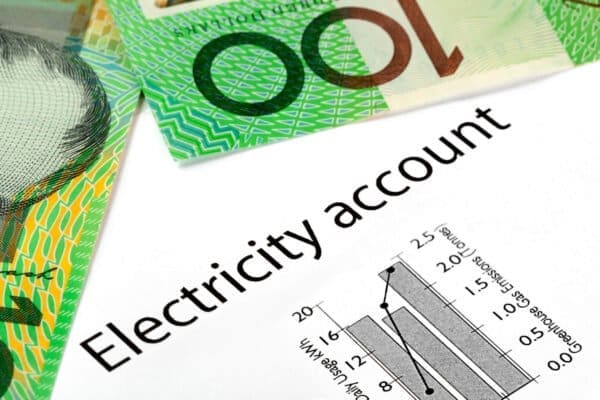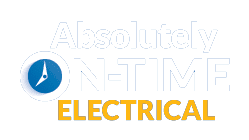Average Power Bills in Sydney
Average Electricity Cost per Household in the Sydney
| Annual Electricity Usage | Annual Electricity Usage Cost ($) | Annual Supply Charge ($) | Estimated Annual Electricity Cost ($) |
| 5439 kWh | $ 1562 | $ 336 | $ 1898 |
Electricity has become one of the biggest expenses for many households across Australia, and Sydney is no exception. With rising energy prices and household budgets being squeezed, it’s more important than ever to understand your electricity bill, the NSW electricity pricing structure and how you can reduce your electricity usage to help save on your power bills.

Average Electricity Usage in Sydney
Ausgrid is the primary network provider supplying the Greater Sydney Region, and operates all of the substations, power lines, underground cables and power poles throughout the area. Data from Ausgrid’s 2021 Local Council Community Electricity Report shows that daily energy consumption per customer ranges from 9.8 kWh in the Sydney LGA to 21.9 in the Ku-ring-gai LGA, with the average across all local councils being 14.9 kWh per day.
Ausgrid reports that Sydney customers have reduced their usage by about 5 percent over the last 5 years. For the average household, the usage rate dropped from 15.7 kWh to 14.9 kWh between 2016 and 2021.
Of course, your household’s electricity consumption may be below or above the stated average based on a number of factors including:
- The number of people in your household – the average household size in Sydney is 2.68 people.
- The size of your home
- The type of heating and cooling systems you have
- The type of hot water system you have
- Whether you have solar panels installed
Other big power items in your home such as electric vehicle chargers, tumble dryers and pool pumps can also contribute to higher than average electricity consumption.

Electricity Costs in Sydney
Based on Canstar Blue customer survey data, the average NSW power bill in 2021 was $1,421 per annum. This figure is based on a residential customer on a single rate tariff using 3900kWh per year. The costs reported include households of all sizes and should only be considered as a general guide.
According to the Australian Energy Market Commission (AEMC) Residential Electricity Price Trends 2021 report, based on a 2-3 person household with mains gas, air conditioning, no controlled load, no swimming pool and on a market offer, the average consumption was 4362kWh per year at a cost of $1,253. To calculate the average bill, the AEMC used the lowest offer from each power company and then multiplied this figure by the average household usage to get an annual cost.
| Pricing Component | Per Day/Per kWh | Annual Cost |
| Average daily electricity usage | 14.9 kWh per day | |
| Average electricity price | 28.72 cents per kWh | |
| Average annual electricity usage cost | $ 1562 | |
| Average daily supply charge | 91.97 cents per day | |
| Average annual supply charge | $ 336 | |
| Average electricity cost per household | $ 1898 |
Note: All figures presented are estimates only. They are based on aggregated data from a range of sources and should only be used as a general guideline to estimate average costs.
Understanding Your Electricity Bill
When you receive your electricity bill at the end of every cycle (typically billed quarterly), you get an overview of your usage, rates, charges and rebates as well as comparisons to previous bills.
The standard charges include a supply rate, which is a fixed cost per day to connect to the energy supply network. There is also a usage rate that shows how much electricity you have used over the billing period, and this is measured in kilowatt-hours (kwH).
Other than what’s shown on your power bill, there are many separate costs in providing electricity to your home, and these include:
- Wholesale costs – The amount paid by retailers to purchase electricity to supply their customers. An energy provider will buy power – known as wholesale market costs – from the National Electricity Market (NEM) and then on-sell the wholesale rates to customers at a marked up price. This is to cover the cost of generating and transporting power to households via poles and wires, as well as factoring in any government schemes and residual expenses from the retailer.
- Network costs – Transportation of electricity through transmission and distribution networks. As network providers have the monopoly in each state, the Australian Energy Regulator (AER) keeps network tariffs in check and regulates what providers can charge customers. Network tariffs are based on a number of variables including a customer’s location, annual usage and peak demand.
- Environmental costs – These make up approximately 6 per cent of a typical electricity bill and include federal and state government schemes such as renewable energy targets and energy efficiency schemes. Energy retailers must meet their legislative obligations under the Renewable Energy Target, and these costs are subsequently passed on to all energy customers as a direct charge.
- Retail costs – Direct and indirect costs incurred by retailers to sell electricity including billing, call centres, meter installation and advertising campaigns.
Each year, the AER determines the Default market offer (DMO) price, the maximum price that electricity retailers can charge customers. Based on an average usage of 3900kWh, the maximum price payable by residential customers within the Ausgrid network for 2022-23 is:
- $1,512 without a controlled load
- $2,122 with a controlled load
Controlled load is a tariff available in New South Wales that lets you have your electricity usage for certain devices metered separately from the rest of your property. Depending on the retailer, this can include devices such as heating systems, swimming pools or irrigation, to be used at certain times of the day.
When advertising offer pricing, electricity retailers must show the price of their offer in comparison to the DMO price. This way, customers can more easily compare the different retailers. The retail cost component of your power bill may vary significantly across different retailers and tariff types so it pays to shop around.
Energy Made Easy is a free Australian Government energy price comparison service for customers in states and territories (including NSW) that have adopted the National Energy Customer Framework. This framework was developed to regulate the connection, supply and sale of energy to grid-connected residential customers.
In addition to Energy Made Easy, the New South Wales state government provides a service called Energy Switch, which continuously monitors energy rates and plans throughout the state. This way, you get all the information needed to make the decision whether to switch to another electrical provider or service plan to reduce your electricity costs.

How to Save Money on Your Power Bill
Other than switching providers to suit your needs, making a few small changes to how your household uses energy could make a big difference to your next electricity bill. Here are eight ways to help reduce your energy usage and save you money:
- Turn off lights and appliances when not needed – This may take some getting used to but leaving appliances (TVs, washing machines etc.) on standby uses excess energy.
- Switch to LED light bulbs – LEDs last longer and use less energy than traditional incandescent bulbs. Thanks to their energy efficiency, LED light bulbs also have a smaller carbon footprint.
- Use timers to turn appliances on and off automatically – Installing a timer will allow you to set your computers, TVs and other devices to turn on and off for specific timeframes.
- Only run the washing machine and dishwasher on a full load – Washing half a load uses the same amount of electricity so it’s best to use your washing machine or dishwasher when they’re at capacity.
- Use a clothesline instead of a tumble dryer where possible – It’s estimated that the average household could save 10 to 20 percent on power bills by line drying the washing. It’s also much gentler on your clothes and kinder to the environment so it’s a win-win!
- Insulate your roof – Your roof may already contain insulation from when your home was built, but insulation materials are much more efficient these days, so it may be time for an upgrade. Insulation can also deteriorate over time, which means your home may no longer be able to maintain a steady temperature, which affects energy usage and efficiency.
- Install solar panels – these generate free electricity throughout the day (and night, if you install a battery.) With the federal solar rebate, you could save around a third on the cost of a new solar system.
- Invest in smart meters – these allow you to monitor your energy use and adjust accordingly. Once you have a better understanding of how and when you are using your energy, you can use this information to access flexible electricity pricing tariffs, potentially saving you even more money on your power bills.
If you have further questions about how electricity billing works in Sydney, or would like more tips on how to reduce your electricity usage, Absolutely On Time Electrical are your local electricians and we’re here to help.
